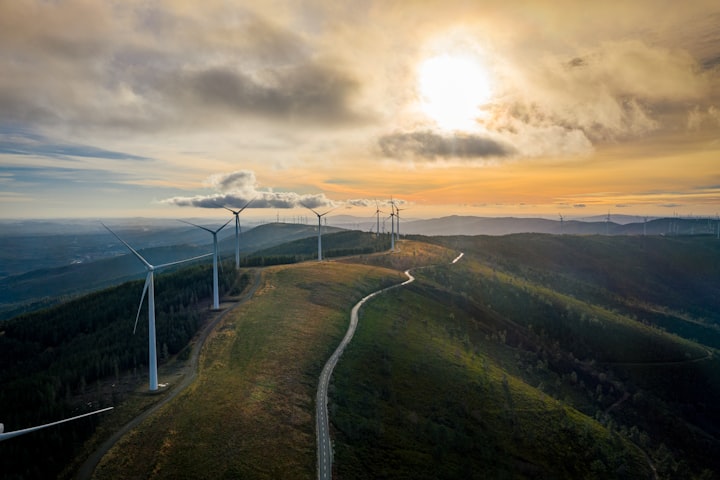Harnessing the Power of Green Energy
A Sustainable Future

Title: Harnessing the Power of Green Energy: A Sustainable Future
Introduction
In a world increasingly concerned about the environmental impact of traditional energy sources, the spotlight has turned to green power as the key to a sustainable future. Green power, derived from renewable and environmentally friendly sources, offers a promising solution to the challenges posed by climate change and the depletion of fossil fuels. In this article, we will explore the various forms of green power, their benefits, and their role in shaping a cleaner and more sustainable world.
The Different Shades of Green Power
1. Solar Power
Solar power harnesses energy from the sun using photovoltaic cells or solar panels. This form of green energy has gained immense popularity in recent years, thanks to its scalability and affordability. Solar panels installed on rooftops and solar farms capture sunlight and convert it into electricity. Solar power reduces carbon emissions, decreases electricity bills, and offers energy independence to users.
2. Wind Power
Wind turbines transform the kinetic energy of the wind into electricity. Wind power is abundant and widely distributed, making it a valuable resource for many regions. It has minimal environmental impact compared to fossil fuels and can produce large amounts of energy, making it an essential component of the green power mix.
3. Hydropower
Hydropower generates electricity by harnessing the energy of flowing water. It includes both large-scale hydroelectric dams and smaller run-of-river projects. Hydropower is a mature technology with a long history of use, providing reliable and clean energy. However, its impact on ecosystems and river ecosystems should be carefully managed to minimize environmental harm.
4. Biomass Energy
Biomass energy derives from organic materials such as wood, agricultural residues, and even waste. This green power source can be used for heating, electricity generation, and biofuels. While biomass energy can be carbon-neutral when managed sustainably, it requires careful resource management to avoid deforestation and other negative environmental impacts.
5. Geothermal Energy
Geothermal power taps into the Earth's internal heat, harnessing it for heating, cooling, and electricity generation. It is a highly reliable and sustainable source of energy, with minimal greenhouse gas emissions. Geothermal power plants operate 24/7 and have a small physical footprint, making them an attractive option for many regions.
Benefits of Green Power
1. Reduced Carbon Emissions
One of the most significant advantages of green power is its capacity to significantly reduce carbon emissions. By replacing fossil fuels with renewable sources like wind, solar, and hydro, we can mitigate the effects of climate change and decrease air pollution, leading to cleaner and healthier environments.
2. Energy Security
Green power sources, unlike fossil fuels, are not subject to supply constraints or geopolitical conflicts. This enhances energy security and reduces our dependence on finite resources, creating a more stable and resilient energy system.
3. Job Creation
The green energy sector is a vital source of employment. Jobs in renewable energy range from research and development to manufacturing, installation, and maintenance. Transitioning to green power can stimulate economic growth and create new opportunities for workers.
4. Technological Advancements
Investments in green power drive technological innovations and advancements. These innovations not only improve the efficiency and affordability of green energy sources but also have positive spillover effects in other industries.
5. Long-Term Cost Savings
While the upfront costs of renewable energy infrastructure can be significant, green power investments typically pay off in the long run. Solar panels and wind turbines have a lifespan of 20-30 years or more, and the cost of maintenance is relatively low compared to fossil fuel facilities.
Conclusion
Green power represents a beacon of hope in the fight against climate change and environmental degradation. By harnessing the energy of the sun, wind, water, and Earth, we can transition to a cleaner, more sustainable energy system. The benefits of green power extend beyond reducing carbon emissions; they include energy security, job creation, technological advancement, and long-term cost savings. As the world continues to grapple with the challenges of a changing climate, green power remains a crucial tool for building a sustainable future for generations to come.
About the Creator
chandra refinery
Explore new things






Comments
There are no comments for this story
Be the first to respond and start the conversation.